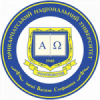Intensity - and Time Course-Based Classifications of Oxidative Stresses
DOI:
https://doi.org/10.15330/jpnu.2.1.9-24Keywords:
oxidative stress, time-course intensity, classification, free radicals, reactive oxygen speciesAbstract
In living organisms, production of reactive oxygen species (ROS) is counterbalanced by
their elimination and/or prevention of formation which in concert can typically maintain a steadystate (stationary) ROS level. However, this balance may be disturbed and lead to elevated ROS
levels and enhanced damage to biomolecules. Since 1985, when H. Sies first introduced the
definition of oxidative stress, this area has become one of the hot topics in biology and, to date,
many details related to ROS-induced damage to cellular components, ROS-based signaling, cellular
responses and adaptation have been disclosed. However, some basal oxidative damage always
occurs under unstressed conditions, and in many experimental studies it is difficult to show
definitely that oxidative stress is indeed induced by the stressor. Therefore, usually researchers
experience substantial difficulties in the correct interpretation of oxidative stress development. For
example, in many cases an increase or decrease in the activity of antioxidant and related enzymes
are interpreted as evidences of oxidative stress. Careful selection of specific biomarkers (ROSmodified targets) may be very helpful. To avoid these sorts of problems, I propose several
classifications of oxidative stress based on its time-course and intensity. The time-course
classification includes acute and chronic stresses. In the intensity based classification, I propose to
discriminate four zones of function in the relationship between “Dose/concentration of inducer”
and the measured “Endpoint”: I – basal oxidative stress zone (BOS); II – low intensity oxidative
stress (LOS); III – intermediate intensity oxidative stress (IOS); IV – high intensity oxidative stress
(HOS). The proposed classifications may be helpful to describe experimental data where oxidative
stress is induced and systematize it based on its time course and intensity. Perspective directions of
investigations in the field include development of sophisticated classifications of oxidative stresses,
accurate identification of cellular ROS targets and their arranged responses to ROS influence, real
in situ functions and operation of so-called “antioxidants”, intracellular spatiotemporal distribution
and effects of ROS, deciphering of molecular mechanisms responsible for cellular response to ROS
attacks, and ROS involvement in realization of normal cellular functions in cellular homeostasis.







